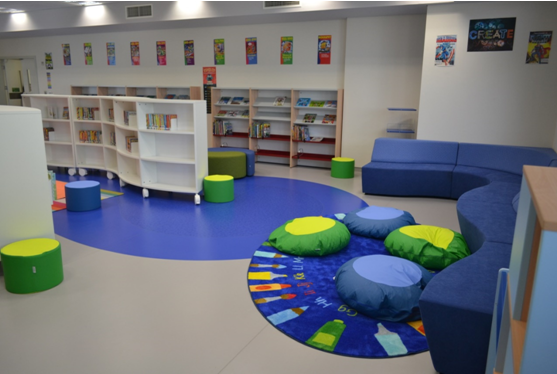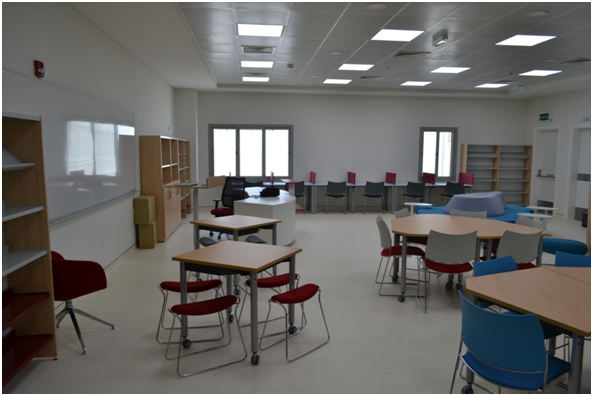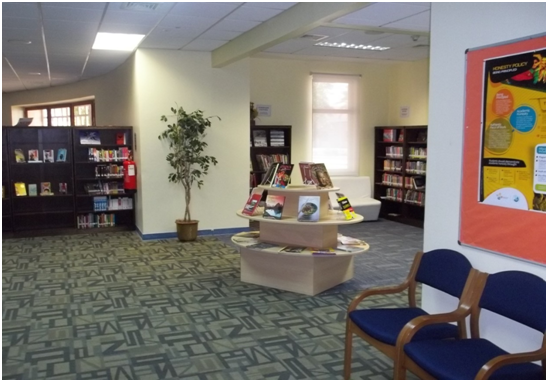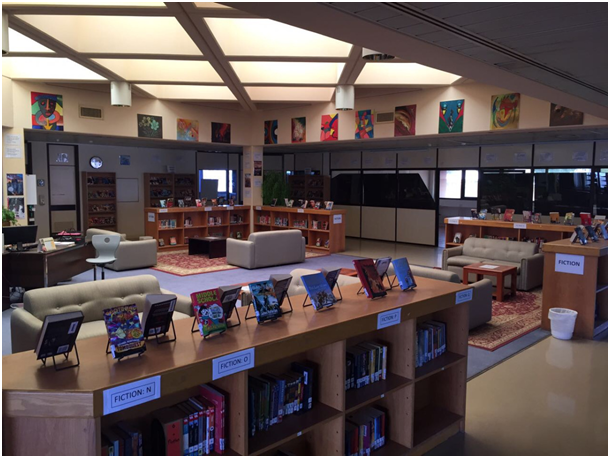Let’s Learn Something Worth: An Exclusive Interview with Mr Craig Lancaster Marr, the Librarian, International School Dhaka (ISD)
Mr Craig Lancaster Marr, working as the school librarian at the International School Dhaka (ISD) in Bangladesh. Ms Syeda Mukta Begum talked to him about his professional journey, the library profession and related issues to get some insights to learn from his experiences. The conversation is published as the special feature on our 18 Issue, Volume 04.

Craig Lancaster Marr
Please share us something about your personal life and professional life.
My name is Craig Lancaster Marr, known as Harry, and I am 50 years old and from the UK. I work as a Librarian at the International School Dhaka (ISD) in Bangladesh. For me, home is the UK and the Philippines where my wife and children currently live. I have a BA (Honours) degree in librarianship from Leeds Polytechnic (now called Leeds Beckett University) and I became a Chartered Associate of the Library Association (UK) in 1991. Becoming Chartered was more common in those days than doing a Master’s degree.
How long have you been working in International schools and where have you worked?
I have been a Librarian for over 30 years, starting out in public libraries in the UK before moving to college libraries. I left the UK in 2007 to start working internationally, and have worked in Japan, the UAE, Qatar, Libya, Saudi Arabia, and now Bangladesh.
What was your career in the UK before you worked internationally?
I started my career in public libraries (because there were more job opportunities in that sector when I graduated) but in 1996 I moved to London as a college librarian. In 2001 I returned to my home county of Lancashire where I worked as a Reference Librarian, a prison librarian and finally again as a college librarian. In 2007 I decided to work overseas to gain new experiences.
What do you think about how we can make an effective school Library?
Involve your students and teachers – invite and encourage class visits to share research skills lessons and literature appreciation, encourage staff and student recommendations for new stock purchases.
Effective school libraries are proactive learning spaces, not just book repositories or archives. They should be a hub of activity where students and teachers can work on their own and collaboratively, with access to a wide range of print and digital resources, managed by knowledgeable professionals who can support their reading and information needs. A modern effective library needs to be a very flexible space, able to physically adapt to different needs and uses and above all it must be a friendly, welcoming space.
There are many ways in which libraries can be improved but the key is energy from the librarian – they need to create the right ‘buzz’ and be seen as a central, helpful person and originator of ideas and activities. No sitting in the office, get out in the heart of the library and engage with your students and teachers.
Your book stock and resources need to support the needs of your students you need to involve teachers in your selection process. You also need to make sure your shelving has clear signs and headers so your students can find what they need easily. Promote your stock with as much face out bookstore type displays as possible. A face out book is far more likely to be borrowed than one on the shelf. These are easy and cheap ‘fixes’ which have an immediate positive effect in your library.
Involve your students and teachers – invite and encourage class visits to share research skills lessons and literature appreciation, encourage staff and student recommendations for new stock purchases. Invite student volunteers to help with shelving and tidying. Display student recommendations. Promote library events at school assemblies. Attend faculty meetings and see how you can best support the school.
What qualities do you think in an international school librarians need to run the school library?
A librarian working internationally needs to be self-reliant and very flexible. It can be very daunting moving to a new country and having to adapt quickly too often very new ways of working. They need to have an independent spirit and lots of energy and creativity. Above all, they need to be able to cope with being away from home and family. Flexibility and resilience are key professional attributes.
What are some of the Pros/Cons of working internationally?
The Pros: in the right location you get higher salaries, tax-free, and often packages include annual flight, work visa, free or supported accommodation and sometimes free utility bills. Some places will cover the cost of bringing family members and provide free or subsidized school places. Contracts are usually 2 years renewable so you can leave and go somewhere else if you decide not to stay. Obvious advantages are the opportunity to see different countries, meet new people, and experience different lifestyles and ways of working. Travel really does broaden the mind.
The Cons: You are away from home and family and may miss important events (happy and sad times). You can get homesick and miss everyday things like certain foods and aspects of your home life. You are a contract worker and that means less to no job security. Not all countries are really welcoming or accepting of outsiders and you have to adapt to local customs and ways of living. Some local work methods and attitudes to work may be very different to your own and this can be frustrating. Living out of a suitcase from job to job can become very limiting and tiresome. Not all jobs allow families to accompany you and that is a heavy burden on relationships. The tougher locations pay more but life is harder of course. Moving jobs and countries every couple of years means friendships are short-term and you have to be good with your own company sometimes. There are some excellent schools, a lot of mediocre schools, and unfortunately quite a few terrible ones so you have to be careful.
What does a librarian need to consider when designing a new library or library refurbishment?
Current thinking is that libraries should be very flexible spaces so consider mobile shelving units and stackable furniture that can be repositioned so spaces can be replanned. Provide spaces for solo and group work, with facilities for IT – either library computers or places for students to use and recharge their devices. Provide as much display space as you can to promote books, resources, and posters. Go for a timeless neutral design and colour scheme and add colour with soft furnishings which can be changed or swapped out as tastes change.
I have been lucky to have been involved in many library refurbishments and re-designs, including planning a couple of completely new libraries. I am very interested in design. Just before coming to Bangladesh I designed two libraries for a new school in Qatar (Swiss International) – a Primary School Library and a Middle School Library. My designs were passed to a library supplier and a final design was made based on the school’s furniture choices, which was about 95% close to my sketches. As you can see from the photos, the design creates a very fresh, flexible, modern look. I have my reservations about bean bags though – I have found the kids tend to lie around rather than sit and read! The colour schemes in each of these libraries create a different effect – lots of energy in the Primary Library, and a sophisticated learning space in the MYP Library.

Primary School Library, Swiss International School Qatar, 2017

MYP Library, Swiss International School, Qatar (2017)
What are the important things need to consider designing a new library?
If you are lucky, maybe you can design a completely new library, but you may be more likely to redesign an existing library. Think about how your space is used, buy whom, and what new uses do you need to consider. Maximize the space and provide places for solo and group work. Make sure your shelving decisions make sense – sections such as Junior Fiction should be together and easily navigable so students can find what they need in one place. There should be a natural flow from one section to the next. Spaces should give a sense of purpose but also where possible be adaptable to new purposes. Your budget will be key, of course, but even with a zero budget re-planning your existing shelving and arrangement could bring big improvements. Do you have to work around fixed features such as electrical outlets, air con units, and existing lighting? Take a fresh look at your library, look online for inspiration, and make lots of drawing plans before you start moving furniture!
At The KAUST School, Saudi Arabia, I had a very large library with heavy dark wooden furniture and a hideous carpet! The centre of the library was dominated by four large couches. The design seemed to suck the energy out of the place – and the students! It seemed to encourage sleeping instead of being an inspiring space. Unfortunately, I was not allowed to make many changes so I worked with what I had, improved the shelf signage and displayed as many books as possible face out to add colour, create interest, and promote the stock.

Secondary Library, KAUST School, Saudi Arabia, 2015
I had a similar problem at King Faisal School, Riyadh, Saudi Arabia. The library was old and had been designed by non-librarians so I had to work with difficult, immoveable shelving. Like the library at KAUST, the library was dominated by couches and had become primarily used by students as a common room. Not surprisingly book issues were very low. I added Arabian carpets, created reading corners, and moved my desk from the office to the centre of the library. This created a sense of purpose (and control). I bought wire book easels and used these to display books, changing displays every couple of week. I did plan a very visually striking library based on the theme of an Arabian Bedouin tent which would not have been expensive and would have linked the library design to local styles and traditions – adding a ‘wow’ factor. Unfortunately, the Principal showed no interest.

MYP/DP Library, King Faisal School, Riyadh, Saudi Arabia, 2016
At ISD Bangladesh I have designed a whole new layout for the Primary and Secondary Library with mobile shelving, new flooring, and lighting plans. The initial response from our Director has been positive but the final design has yet to be approved. I have a backup plan if the refurbishment does not go ahead, reconfiguring how the existing shelving is arranged, but I remain hopeful about a full refit.
Why should LIS students choose to work in the school libraries?
School and college libraries can be fun and challenging places to work. You may be working on your own or with a small team and often have the independence to run the department with some freedom of choice in your professional decisions. It can be very rewarding supporting students with their research and reading for pleasure needs. If you are lucky, faculty members will cherish your efforts (that depends on your school and colleagues though!) Education is a growth industry in many countries so with new schools there are new job opportunities and, increasingly, library and information skills are becoming integrated into curricula.
How could the librarian and library team help out students and teachers’ research skills in the school library?
All classes should come to the library on a regular basis across the school years for library classes as part of a school Information Literacy Program, to teach library use, research and information handling skills, academic honesty and citation, and use of resources. In addition, it is important to promote a love of reading and appreciation of different literature. The librarian should be available to co-teach or support research skills, citation, and such like, in classes and as a ‘go-to’ expert. You need to make yourself invaluable to your school!
Do you like to recommend something for the school librarian in Bangladesh to develop them?
Promote your library and services to your whole school community – students, teachers, administrators, and parents. Build support!
Be prepared to work with what you have got. I have worked in very rich schools that were very generous with their budgets, and some that gave me the tiniest budgets they could get away with. Being creative with what you have is far more important. You can improve the layout of your library, add some new clear guiding, display some posters, library poems, books reviews and training posters – either make them yourself (or involve students) or download from the Internet. These add interest and splash of colour.
Get as many books as you can ‘face out’ like in a books store and you will be surprised at how many get borrowed by the students. The run themed book displays to push underused areas of stock. Encourage student recommendations and mini book reviews to generate interest in your books. Join Facebook groups for school librarians to share ideas, ask for suggestions and share practices.
Promote your library and services to your whole school community – students, teachers, administrators, and parents. Build support! Become invaluable as a positive, proactive source of information, support, and ideas. The key is the energy you bring to the library. Remember, a lot of what you do is ‘invisible’ work – non-librarians don’t usually know or understand what we do on a day to day basis so make sure everyone in school knows that you don’t shelve books all day. Don’t be afraid to promote yourself and your library services.
The Librarian Times is the first-ever weekly News Bulletin in LIS profession in Bangladesh and proceeding without having any intrusion throughout around two years? Please recommend or share us in your point of view as an expat which area we should develop or improve near future?
I would suggest encouraging your readership to share their best practices and experiences and provide an online forum where they can post and answer queries about the profession. You could publish some of these in the bulletin. That makes the bulletin more engaged with Librarian’s working lives, moving from an interesting read to an essential read. It is important for Librarians, who often work on their own, to be able to connect and share ideas and practices.
